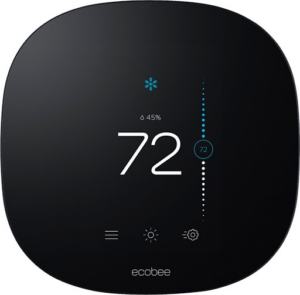 As North Carolinians, we know it’s not uncommon to experience all four seasons in one week, especially during the late fall. This time of year, many customers ask about the safety of switching from heat to AC, and from AC to heat. Is it safe? Is it effective? Does it put undue stress on the HVAC system? Read on to learn the best way to adjust your thermostat so your home remains comfortable despite sharp changes in the outside temperature.
As North Carolinians, we know it’s not uncommon to experience all four seasons in one week, especially during the late fall. This time of year, many customers ask about the safety of switching from heat to AC, and from AC to heat. Is it safe? Is it effective? Does it put undue stress on the HVAC system? Read on to learn the best way to adjust your thermostat so your home remains comfortable despite sharp changes in the outside temperature.
Set It and Forget It: The Benefits of the “Auto” Feature
The majority of the thermostats installed today are equipped with an auto changeover setting that allows the owner/user to program thresholds for the system. The heat or AC will automatically turn on based on the outside temperature and current temperature inside the home. Programming your thermostat to “Auto” enables it to change from heat to AC and vice versa in one day without causing undue stress on the unit. Whether you prefer to keep your home at 65 degrees or 80, you can program your thermostat to achieve the desired comfort level despite the outdoor temperature.
There’s More Than One Way to Keep Your Home Comfortable
Despite our recommendation of keeping your thermostat set to “Auto,” we still have homeowners that prefer the control of changing their system over manually. Despite modern beliefs, changing from heat to AC and vice versa does not put undue stress on your system, but there are a few things to be aware of.
Drawbacks to Manually Changing Over Your Home Thermostat
- Setting your thermostat to AC if the outdoor temperature is below 60 degrees will overwork and stress your system and can lead to untimely repairs. Most people don’t set it to “AC” when it’s below 60 degrees, but on a warm day, you may forget to change it back over to “heat” during the cooler nights.
- You may notice stagnant air in your home. If your system is set to heat and it is above your desired temperature in the home, the system will not run. When set to “Auto,” your system is using warm or cool air around the clock to achieve the desired temperature.
- You may notice your home is less comfortable. Temperature swings are common in North Carolina. Last week, we had a 30-40-degree swing in just one day! It is hard for any one person to remember to change from heat to AC and vice versa.
In conclusion, we recommend everyone keep their thermostats set to “Auto.” No matter the season and your desired home temperature, modern systems are designed to keep your home comfortable. If your system is not heating/cooling to your desired temperature, contact our office today to schedule a heating system repair. Our professional technicians will get your home back to your desired temperature despite the North Carolina swings in temperature.
